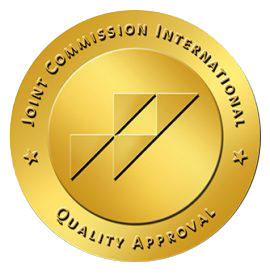
How to detect and manage the various types of Diabetes
Diabetes is a lifelong disease that mainly involves the hormone insulin. Healthcare professionals and researchers are projecting that diabetes will become a pandemic disease by 2030, with an expected prevalence projection in the Middle East that will reach 164%. These numbers can be reduced with a better understanding of the disease. Dr. Merheb, an Endocrinologist at MLH will explain important facts about diabetes to clarify your unanswered questions.
1- How to differentiate between the different types of diabetes?
Type 1 diabetes (T1DM) occurs at anytime between pediatric (newborn) and adolescence years (21 years old). Type 1 diabetes is usually seen in thinner body types and requires insulin. Type 1 diabetes is present in two forms; Type 1-A, which is inherited, or Type 1-B, which is idiopathic, meaning it only effects one person within a family and it is not genetic.
Type 2 diabetes (T2DM) usually occurs during adulthood (any time above the age of 21), and is found in people who are obese, this type of diabetes requires oral medication.
Nowadays, there is an overlap between both types of diabetes, T2DM can be found in a person at around the age of 18 and T1DM may start during adult years. The latter is known as LADA (Late Auto-immune Disease of the Adult) it requires insulin in its treatment regimen.
2- Gestational diabetes: Are there any long term risks?
Gestational diabetes is a type of diabetes that can be diagnosed at any point throughout pregnancy and subsides with delivery. In most cases, it is diagnosed during the second or third trimester. In some cases, Gestational diabetes may result in the patient putting on an unusually large amount of weight during the first trimester and an elevated glycemic level (both blood glucose and HbA1c).
If a pregnant woman is diagnosed with Gestational diabetes, she will then be required to receive yearly routine check-ups due to the increased risk she has of developing T2DM.
3- What is the etiology of the disease?
Developing diabetes may have several etiologies or causes these include both medical conditions as well as genetic predispositions. In fact, diabetes is defined by more than 25 genes, hence in some cases the root cause remains unknown. The most common causes include:
- Auto-immune diseases: Celiac disease, thyroid disease, vitiligo, or any other disease where the immune system’s ability to fight invaders decreases.
- Altered pancreatic activity, altering glucagon and insulin levels,
- Genetic predisposition: when 1 specific gene is identified to cause diabetes, it is called monogenic diabetes, otherwise it could remain unidentified,
- Morbid obesity
- Metabolic syndrome
- Pancreatic diseases: recurrent pancreatitis or pancreatectomy,
- Long term steroid intake for a certain medical condition such as cancer treatment.
4- What are common signs and symptoms that we should be aware of, especially among children?
Normally, both types of diabetes show the same signs and symptoms among adults and children, these include:
- High water intake due to increased thirst
- Increased urination caused by large water intake
- Unexplained weight loss that could amount to 7-8 Kg
- General weakness, tiredness and fatigue
In addition to these signs, Type 1 diabetics usually suffer from DKA (diabetic ketoacidosis) due to the complete absence of insulin. However, in children, it becomes increasingly difficult to detect diabetes, as children do not have the ability to link their changes in habit to a disease. This requires parents to be alert and look for signs such as increased urination during the night, decreased performance at school (due to a lower level of concentration and energy), weight loss, and reduced intake of food.
The aforementioned symptoms might not be felt or experienced, however, a general admission to the hospital for an infection, surgery or seizure might lead to the detection of the disease as blood glucose is part of the routinely conducted tests.
5- How to tell if someone is diabetic?
Diabetes is generally diagnosed at any stage of life; this can be anytime that the previously mentioned symptoms are displayed. A blood test is conducted and diabetes is diagnosed based on the following guidelines:
- Fasting blood glucose above 126 mg/dL on 2 occasions
- Post-prandial blood glucose above 200 mg/dL
- Severe symptoms with a post-prandial glucose above 200 mg/dL
- HbA1c higher than 6.4%
6- What is the best treatment for diabetes and how is it chosen?
In order to decide on the best treatment for diabetes a complex process based on different factors needs to take place, these factors include:
- The type of diabetes from that the person suffers
- The duration in which the patient has been diabetic
- The existence of any complications with their condition
- The status regarding their blood glucose and HbA1c target set with their physician.
The most common treatment for any type of diabetes is the implication of lifestyle changes including dietary modifications and the inclusion of physical activity in daily routines. However, it remains crucial that diabetics remember to check their blood glucose level before engaging in any type of physical activity so that they are able to regulate it before starting. A blood glucose level above 250 mg/dL is a contraindication due to the increased risk of complications during the session.
T1DM is usually treated with insulin injections or pumps as the pancreas no longer produces any insulin. Recent studies have shown that giving Type 1 diabetics oral medication can also be beneficial; these include metformin and SGLT2 inhibitors (a novelty in diabetes treatment).
T2DM is usually treated with oral medications such as sulfonylureas, metformin, GLP1 analog, and SGLT2 inhibitors. However, some individuals may require insulin injections at a certain point in time, since pancreatic reserves may eventually deplete causing production to cease.
7- What is the purpose of the diabetes center at MLH?
The diabetes center at MLH was initially established as a clinic, it then transformed into a multidisciplinary center in 2007. It is now ranked the 2nd out of the 3 existing centers in Lebanon. It is composed of a fully mature medical team including nurses, doctors, educators, and dietitians. MLH has partnerships with several medical companies that provide new innovative technologies.
Educators at the center are fully dedicated to teach patients and their caregivers everything they need to know about their condition (understanding the disease, the potential complications, self-monitoring, filling of their booklet…). Education sessions are provided that focus on insulin injections, patients are taught where to inject themselves, how many insulin units should be taken and the times that the injections should be taken, as well as other important information.
As for the dietitians, they are a crucial part of the team as they assist in weight loss and matching insulin and carbohydrates. Furthermore, our partners from various different medical companies can be of great assistance when it comes to pumps or glucose monitoring devices, where special education sessions are also offered.
Finally, diabetes is not a disease to take for granted or to underestimate. Those who feel any sign or symptom that could be classified as an indicator, or anyone who already suffers from diabetes is advised to seek medical assistance so that they are able to receive an appropriate treatment plan and prevent any further complication that the disease may cause. This can be done through regular check-ups and adherence to their medical treatment plan. There is always the possibility to improve your life-style and to live a healthy life!
Dr. Marie Merheb Feghali
Endocrinologist
Leave a reply







